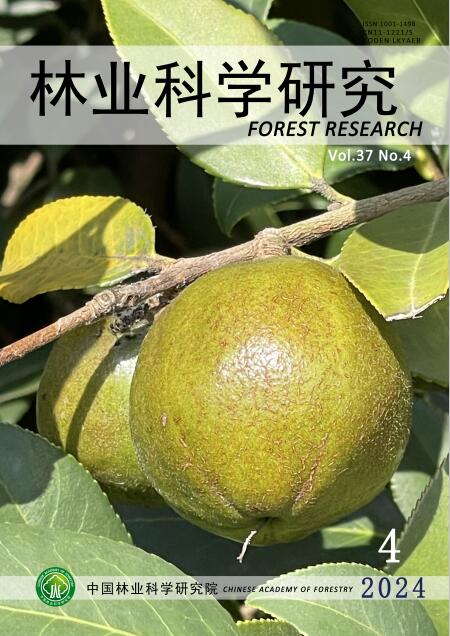Comparative Studies of the Chemical Nature of Ethanol Product of Selected Wood Species
Q4 Agricultural and Biological Sciences
引用次数: 1
Abstract
This thesis covers the process of making Ethanol from wood biomass instead of starchy biomass. The saw dust of Gmelina (Gmelina arborea), Eku (Brachystegia euricoma) and Mahogany (Entandrophragma cylindricum) was collected in a saw mill in Ore and used to produce ethanol by hydrolysis and fermentation processes. The density of each of the wood species was thereafter determined as 570 kg/m3, 750 kg/cm3 and 600 kg/cm3 respectively. The yield of ethanol from Eku, Mahogany and Gmelina wood was determined as 50.61 g/l per 100 g of dry sawdust, 55.43 g/l per 100 g of dry sawdust and 53.01 g/l per 100 g of dry sawdust respectively. The density of the ethanol produced from the wood of Eku, Mahogany and Gmelina was 0.8033 g/cm3, 0.7088 g/cm3, and 0.8033 g/cm3 respectively. These results were subjected to Analysis of Variance (ANOVA) and compared with conventional ethanol. The ANOVA result shows no significant difference among the ethanol yield and ethanol density obtained from the three wood species and that of the conventional ethanol. The ionic constituents of the ethanol of the three wood biomass was analyzed using Furrier Transform Infrared Spectrometric Analyzer (FTIR) and Atomic Absorption Spectrometric Analyzer (AAS). The AAS result shows that the ethanol obtained from the three wood species contains transition metals like Copper (Cu), Zinc (Zn), Cadmium (Cd) and Chromium (Cr) while the FTIR results show the presence of ethanol functional groups such as OH, Carbon to carbon single bond which are normal components of ethanol in the conventional ethanol as well as in the ethanol produced from each of the three wood species.几种木材乙醇产物化学性质的比较研究
本文介绍了用木质生物质代替淀粉质生物质制备乙醇的工艺。在矿石的一个锯木厂,收集了甘木桃(Gmelina arborea), Eku (Brachystegia euricoma)和桃花心木(Entandrophragma icum)的锯末,通过水解和发酵工艺生产乙醇。然后确定每种木材的密度分别为570 kg/m3, 750 kg/cm3和600 kg/cm3。测定了埃库木、红木和香茅的乙醇得率分别为50.61 g/l / 100 g干锯末、55.43 g/l / 100 g干锯末和53.01 g/l / 100 g干锯末。以榆木、红木和绿木香为原料制备乙醇的密度分别为0.8033 g/cm3、0.7088 g/cm3和0.8033 g/cm3。这些结果进行了方差分析(ANOVA),并与传统乙醇进行了比较。方差分析结果表明,三种木材的乙醇产率和乙醇密度与常规乙醇无显著差异。采用傅里叶变换红外光谱分析仪(FTIR)和原子吸收光谱分析仪(AAS)对3种木材生物质乙醇的离子成分进行了分析。原子吸收光谱结果表明,三种木材制备的乙醇均含有铜(Cu)、锌(Zn)、镉(Cd)和铬(Cr)等过渡金属;红外光谱结果表明,三种木材制备的乙醇均含有OH、碳-碳单键等乙醇官能团,它们是常规乙醇和三种木材制备的乙醇的正常成分。
本文章由计算机程序翻译,如有差异,请以英文原文为准。
求助全文
约1分钟内获得全文
求助全文
来源期刊

林业科学研究
Environmental Science-Ecology
CiteScore
0.90
自引率
0.00%
发文量
4834
期刊介绍:
Forestry Research is a comprehensive academic journal of forestry science organized by the Chinese Academy of Forestry. The main task is to reflect the latest research results, academic papers and research reports, scientific and technological developments and information on forestry science mainly organized by the Chinese Academy of Forestry, to promote academic exchanges at home and abroad, to carry out academic discussions, to flourish forestry science, and to better serve China's forestry construction.
The main contents are: forest seeds, seedling afforestation, forest plants, forest genetic breeding, tree physiology and biochemistry, forest insects, resource insects, forest pathology, forest microorganisms, forest birds and animals, forest soil, forest ecology, forest management, forest manager, forestry remote sensing, forestry biotechnology and other new technologies, new methods, and to increase the development strategy of forestry, the trend of development of disciplines, technology policies and strategies, etc., and to increase the forestry development strategy, the trend of development of disciplines, technology policies and strategies. It is suitable for scientists and technicians of forestry and related disciplines, teachers and students of colleges and universities, leaders and managers, and grassroots forestry workers.
 求助内容:
求助内容: 应助结果提醒方式:
应助结果提醒方式:


